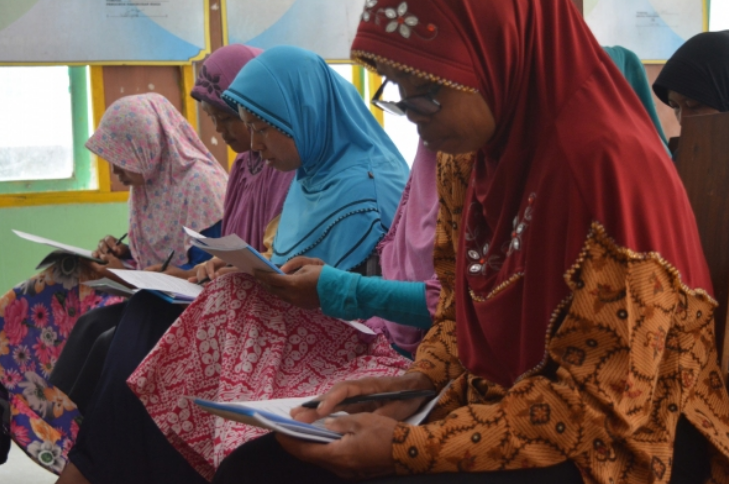Women hold the key to disaster resilience in Indonesia

Indonesia is particularly vulnerable to natural disasters due to its location in the Pacific Rim of Fire where earthquakes, volcanic eruptions and tsunamis.
Each year the Indonesian Government spends between $300-500 million on disaster recovery; over the last 30 years the country has experienced an average of 290 significant natural disasters each year.
It also is expected that climate change will worsen the effects of droughts and flooding for the country.
Similarly, natural disasters are expected to significantly worsen across Asia due to climate change.
A large proportion of Indonesia’s population lives just above the poverty line, meaning natural disasters can easily push them into poverty.
Women are particularly vulnerable to this but they can also play a critical role in reducing risk and preparing for disasters.
For example, YAKKUM Emergency Unit is a project that empowers women in Central Java and Jogykarta to protect their communities from disasters.
Following the devastating Pacific Tsunami in 2004, where 167,000 Indonesians were killed, the government shifted its policies towards disaster prevention rather than just disaster response.
In 2007, the Indonesian Government introduced a disaster management bill which strengthened the country’s disaster management agency.
A key part of disaster preparedness is encouraging civil society groups to empower and include entire communities in resilience building.
Arghya Sinha Roy of the Asian Development Bank emphasised this, commenting:
"Every disaster is not on a nationwide scale - it can be a localised district or village-level disaster”
During the 2004 tsunami fatalities were higher among women as they were largely unaware of safety procedures and were not involved in disaster plans.
Irina Rafliana, a researcher at the Indonesian Institute of Sciences, highlights that in many Asian countries women are in the best position to protect lives, property and income:
"If you compare Indonesia with other countries in Southeast Asia, the role of women ... in disaster risk reduction is among the strongest”
Similarly, as women traditionally take care of their homes and finances and spend more time in the local neighbourhood they are able to pinpoint risk areas and key items to save in a disaster.
Join us at the 4th Annual AIDF Asia Summit to discuss the significance of disaster risk management and resilience in Asia. The summit is taking place on 20-21 June 2018 in Bangkok.
If you’d like to stay informed on the latest updates in aid and development, please sign up for the AIDF newsletter.
Image credit: YAKKUM Emergency Unit













